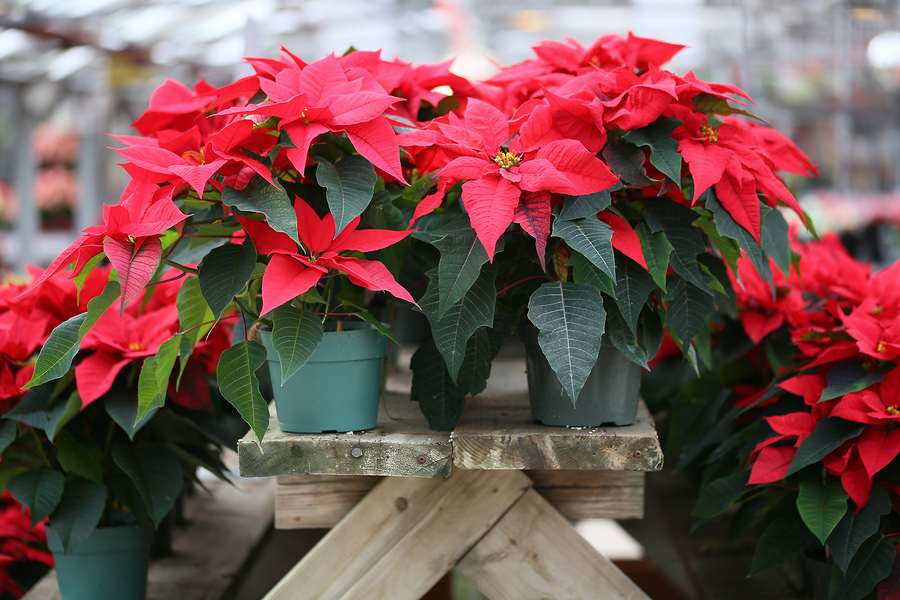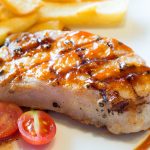More Than Just A Flower: The Masonic Life of Joel Poinsett
Every December, a special flower is seen. It is called the poinsettia. Mexicans, from whose land it came originally, called it “flor de noche Buena.” Many do not realize that the flower’s American discover was a Mason, who was very influential in his day and ahead of his time. Let me introduce you to this man who was educated in England, studied medicine at Edinburgh University, and learned military science at Woolwich Academy. Brother Joel Poinsett was also proficient in French, Spanish, Italian, and German. A well traveled man; he was an early U.S. traveler to the Middle East, spent time in Europe, walked through Switzerland and visited Italy, before seeing St. Petersburg.
We do not know when Poinsett became a Mason, but he is recorded as being a Past Master of two South Carolina Lodges (Recovery Lodge #32 in Greenville and Solomon’s Lodge #1 in Charleston). Although he was elected as Deputy Grand Master for South Carolina in 1821, he did not serve as he was appointed Secretary of War by President Martin Van Buren. He was Grand High Priest for the state from 1821-41.
Besides these links to Freemasonry, Poinsett was the first Minister to Mexico. The United States did not appoint ambassadors until 1896. There seems to have been very little Masonic activity at the time in the region. But when he arrived in Mexico, he found five York Rite bodies in a formative state, with no regular standing. Thirty-six Scottish Rite Masons requested for him to get charters to form York Rite Lodges. He helped get five charters, granted by the New York Grand Lodge. Besides having helped the Royal Arch gain regular status, he assisted the Grand Lodge in forming in Mexico.
It was Joel’s founding of the York Rite lodges that caused the only legitimate complaint that was made against him as Minister to Mexico. The Mexican clergymen looked another way when it came to the Scottish Rite, but they were thoroughly hostile against the York Rite. He was accused by the Church party of interfering against them. At first the York Rite bodies performed their ritual, charity and beneficence. But then the Yorkinos, as the Mexican York Rite Masons were called, went far beyond what Poinsett taught them. It became a violent, political group that advocated democracy, liberalism, along with independence in a country where the Church ruled and where the present government was headed by a dictator. Poinsett withdrew from the York Rite group he founded, but was blamed for all that happened and became persona non grata to the government. They even coined the word poinsettismo to characterize his officious and intrusive behavior.
He was not liked much by the Mexican government even before this. It was a time of exploration by Americans who did not care to respect borders or laws and since he was the representative American in their legal disputes, he wasn’t liked in Mexican circles.
It did not get any better for Joel, as the modern day Grand Lodges of the southwestern United States seem not to be interested in this time period or our brother, as they did not come into existence until the 1860’s. Since they do not recognize much Masonic activity before the inception of their Grand Lodges. That is a shame as Poinsett was one of the first Masons we know of in the southwest. In a time where there were hardly any Americans in that area, and no military lodges until 1846, he stands out not only as a person, but also as a Mason. He was called one of the best educated and most widely traveled Americans of his day. Poinsett gave John Fremont his first opening in government service. He took steps to have Fremont commissioned as a second lieutenant in the topographical corps, which impacted our western history between the upper Missouri and upper Mississippi Rivers.
There is one other part of his life that you need to know about. In 1810, Poinsett was appointed as the first American diplomat to Argentina and Chile, when South American countries were struggling to gain their independence from Spain. And many think he served as a “special agent” in South America. President Madison sent him to Brazil, Chili and Peru. And if you are familiar with Patrick O’Brian’s Master and Commander character of Doctor Stephen Maturin, you get an idea of what he was. While he was in Peru, American whaling ships were seized in the port of Talcahuano. Poinsett took command of a small force put at his disposal by the Chilean government and freed the ships and their men. He had to cross the Andes for his return home when a British commander would not let him return by sea on one of their boats, for they did not like his participation in recent activities and American/British relations was not at its best. It was during this time, he became the friend and adviser to Carrera, also a Mason and was invited to write a constitution for the new republic. Poinsett used the recently enacted U.S. Constitution as his model for this.
Later in life, he was elected to the South Carolina legislature, and served three terms. In January of 1816, he sponsored a bill to limit the importation of slaves into the state, a step towards elimination of slavery altogether. He was elected to the U.S. House of Representatives in 1820.
Bro. Poinsett was always interested in the progress of science and art. He was actively involved in the creation of the National Institute for the Promotion of Science, the forerunner of the Smithsonian Institution, and became its first president. He experimented with crop rotation, and how to get better yields from rice, peas and hemp. And besides the poinsettia plant, he also brought to his home a red and yellow Mimosa, the Mexican Rose and an unusual hibiscus capable of changing colors overnight from white to pink.
His 1824 book, Historical Sketch of the Revolution was a rich resource of his day and is a very good read for us today, as good as or better than the other journals I have in my western history library. So, maybe you can see now a man and Brother Mason who deserves to be recognized for his life’s work, and not just a plant. But, if nothing else, think of his life and Masonic link every time you see a poinsettia blooming around Christmas time.



